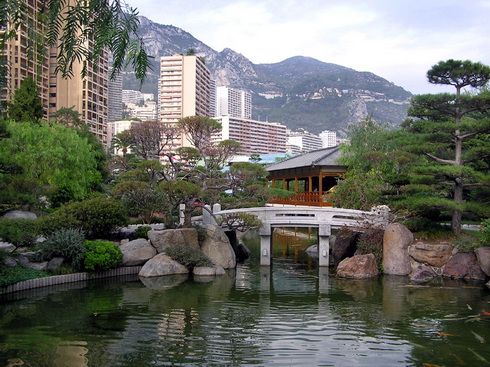|

The Japanese garden became the favourite style of a small garden. It is not casual: the Japanese garden is insignificant, but its image is not settled by the dramatized tiny garden with small lamps, bridges and umbrellas. Every detail of a garden in Japan has a difficult inner meaning, and plants are specific only for this country. In Europe and especially in the midland of Russia it is impossible to use bananas, palm trees and the orchids growing in Tokyo, but it is quite possible to borrow some receptions of decoration, for example, pavement of paths in the form of imitation of waves on sandy or gravel covering or symbolical stone compositions. The main principle of the Japanese garden is sensation of calmness and rest, contemplation of the nature and miniaturization.
The Japanese garden masters reproduce nature on a small site rather limited assets. The denotation of nature in a reduced form to make an impression of spatial depth conducts aspiration to change the proportions of natural scale, to application of dwarfish trees and rocks, it means to some convention and romanticism.
The landscape created in the Japanese garden, is far from the real nature, but the images of this nature altered by the author, are the base and the principles of the garden. Some gardens are similar to hieroglyphs, and it is necessary to be able to read them. The direction and bend of the artificially grown up branch of a tree, the size, form and position of a stone, the material of coverings – all this in conditional form tells us about the plan of author.
See also: Japanese Garden Pictures, Japanese Garden Videos, Landscape Style
|
